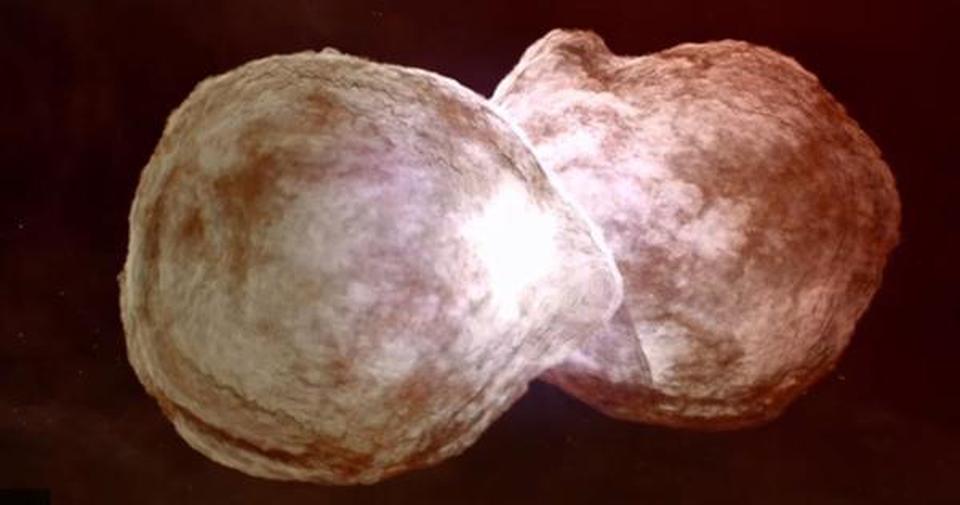 The system contains a pair of massive stars whose eccentric orbits bring them close every 5.5 years.
The system contains a pair of massive stars whose eccentric orbits bring them close every 5.5 years.
Eta Carinae is accelerating particles to high energies
Eta Carinae — the most luminous and massive stellar system within 10,000 light-years — is accelerating particles to high energies, some of which may reach the earth as cosmic rays, a study using data from a NASA telescope has found. “We know the blast waves of exploded stars can accelerate cosmic ray particles to speeds comparable to that of light, an incredible energy boost,” said Kenji Hamaguchi, an astrophysicist at NASA’s Goddard Space Flight Center in the U.S. “Similar processes must occur in other extreme environments.
Our analysis indicates Eta Carinae is one of them,” said Mr. Hamaguchi, lead author of the study published in the journal Nature Astronomy. Astronomers know that cosmic rays with energies greater than one billion electron volts (eV) come to us from beyond our solar system. However, because these particles — electrons, protons and atomic nuclei, all carry an electrical charge — they veer off course whenever they encounter magnetic fields. This scrambles their paths and masks their origins. Eta Carinae, located about 7,500 light-years away in the southern constellation of Carina, is famous for a 19th century outburst that briefly made it the second-brightest star in the sky. This event also ejected a massive hourglass-shaped nebula, but the cause of the eruption remains poorly understood.
The system contains a pair of massive stars whose eccentric orbits bring them unusually close every 5.5 years. The stars contain 90 and 30 times the mass of our Sun and pass 225 million km apart at their closest approach — about the average distance separating Mars and the Sun. “Both stars drive powerful outflows called stellar winds,” said Michael Corcoran, also from Goddard. “Where these winds clash changes during the orbital cycle, which produces a periodic signal in low-energy X-rays,” said Mr. Corcoran. NASA’s Fermi Gamma-ray Space Telescope also observes a change in gamma rays - light packing far more energy than X-rays - from a source in the direction of Eta Carinae.
However, Fermi’s vision is not as sharp as X-ray telescopes, so astronomers could not confirm the connection. To bridge the gap between low-energy X-ray monitoring and Fermi observations, Hamaguchi and his colleagues turned to NuSTAR space telescope. Eta Carinae’s low-energy, or soft, X-rays come from gas at the interface of the colliding stellar winds, where temperatures exceed 40 million degrees Celsius. However, NuSTAR detects a source emitting X-rays above 30,000 eV, some three times higher than can be explained by shock waves in the colliding winds. For comparison, the energy of visible light ranges from about 2 to 3 eV. The team’s analysis shows that these “hard” X-rays vary with the binary orbital period and show a similar pattern of energy output as the gamma rays observed by Fermi.